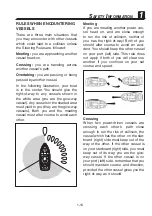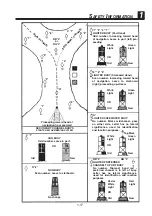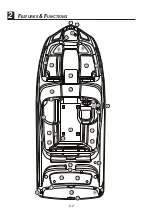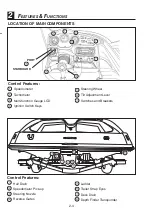
#
S
AFETY
I
NFORMATION
1-16
Overtaking
If you are passing another vessel, you
are the give-way vessel. This means
that the other vessel is expected to
maintain its course and speed. You
must stay out of its way until you are
clear of it. Likewise, if another vessel is
passing you, you should maintain your
speed and direction so that the other
vessel can steer itself around you.
OTHER SPECIAL SITUATIONS
There are three other rules you should
be aware of when operating your boat
around other vessels.
Narrow Channels and Bends
When navigating in narrow channels,
you should keep to the right when it
is safe and practical to do so. If the
operator of a power-driven vessel is
preparing to go around a bend that
may obstruct the view of other water
vessels, the operator should sound a
prolonged blast of four to six seconds
on the horn. If another vessel is around
the bend, it too should sound the horn.
Even if no reply is heard, however, the
vessel should still proceed around the
bend with caution.
Fishing Vessel Right-of-Way
All vessels fishing with nets, lines or
trawls are considered to be “fishing
vessels” under the International Rules.
Vessels with trolling lines are not con-
sidered fishing vessels. Fishing ves-
sels have the right-of-way regardless
of position. Fishing vessels cannot,
however, impede the passage of other
vessels in narrow channels.
Sailing Vessel Right-of-Way
Sailing vessels should normally be
given the right-of-way. The exceptions
to this are:
1. When the sailing vessel is overtak-
ing the power-driven vessel, the
power-driven vessel has the right-
of-way.
2. Sailing vessels should keep clear of
any fishing vessel.
3. In a narrow channel, a sailing vessel
should not hamper the safe pas-
sage of a power-driven vessel that
can navigate only in such a channel.
GIVE-WAY
VESSEL
GIVE-WAY
VESSEL
1
















































